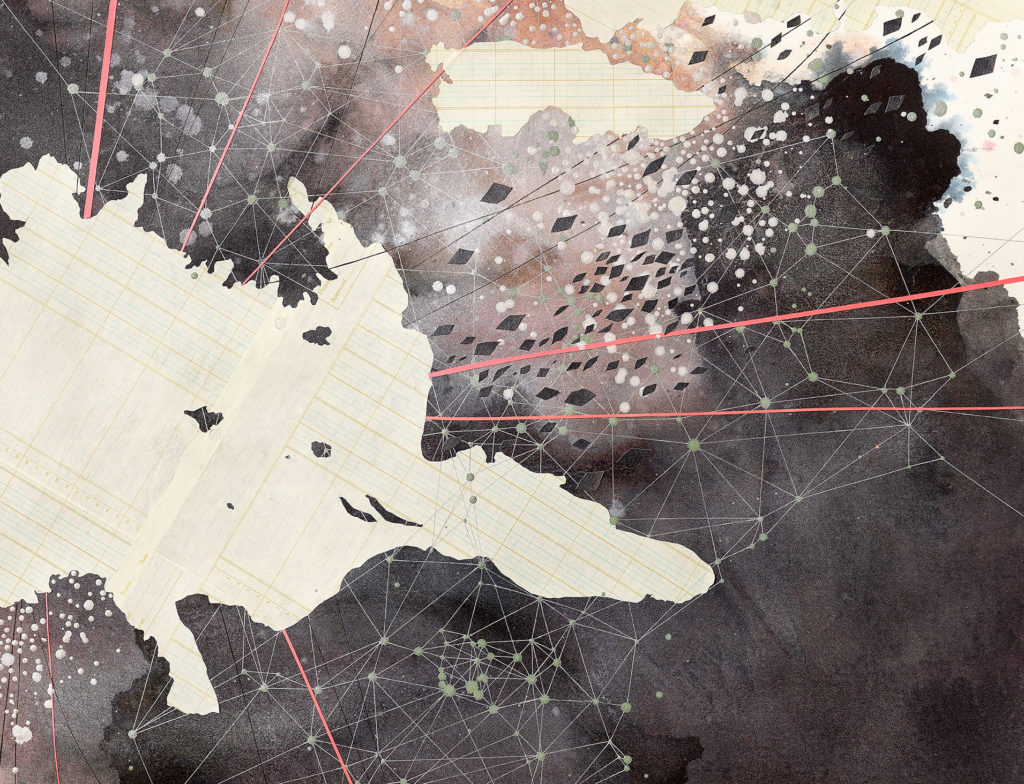We are surrounded by big numbers. We have been for a while. Statistics, polling data, representative sampling. Big numbers cleave to us and situate us in space. Google the words “world population.” Up comes a map, color coded with dark patches to signify population density by nation. China and India are darkest. The United States is lighter. Moving north into Canada the color fades. Greenland disappears altogether in white. Next to the map, bolded font announces 7.5 billion, the global population estimate in April 2017. It’s followed by the United Nations’ prophecy of things to come: 11.2 billion in the year 2100.
These kinds of numbers are so embedded in our private thinking and public discourse that we often forget population sampling technologies date back only to the late seventeenth and eighteenth centuries, as Europeans fanned out across the world. Christians mobilized these numbers. The first US foreign missionaries landed at Bombay in 1813. Five years later, they published The Conversion of the World: or, The Claims of Six Hundred Millions. Based on the “accurate computing” of global “heathendom,” the tract was so popular that the figure 600 million was cemented in the Protestant imagination for two generations to come. Missionary reports were punctuated with linguistic gigantism (teeming millions!) and burst with zeros. “There are now 2,000,000 of native Christians in India. At the same rate of progress there will be 24,000,000 in fifty years, and 200,000,000 in one hundred years,” ran a typical article in an 1892 issue of Heathen Woman’s Friend.
Big numbers could make American blood run cold. “Millions” signaled large populations, but also the vast economic power, countless ancestral gods, and expansive physical territories of places like India and China. To the question, “Are we all there is?” big numbers answered a clear and ringing “No.” Nineteenth-century Protestants were small in global terms.
For missionary fundraisers, this fact called for bold, heroic evangelism. They marshaled big numbers to haunt Christian hearts with enormity. Famed missionary Hudson Taylor felt the weight of China’s “perishing millions” so intensely that he could not sleep or eat—his health broke down and he was born again.1Taylor in Edwin L. Frizen, 75 Years of IFMA, 1917–1992: The Nondenominational Missions Movement (South Pasadena, CA: William Carey Library, 1992) 149. But for everyday people, invoking millions could have the opposite effect. Confronted with zeros, they settled into comfortable laissez-faire: Their efforts would always be too “hopelessly small and inadequate” to illumine the vast darkness of heathendom, anyway.
Half a century later and a different concern. Armed with graphs and dire predictions, Americans in the 1960s christened the epoch of population explosion. It seemed that humans would reproduce until, to quote Presbyterian pastor and Christian Children’s Fund director J. Calvitt Clarke at his prophetic best, “future generations will drink the rivers dry and, like a plague of locusts, eat the farms barren and shove against each other to find even standing room.” “We are on the brink of global suicide,” exclaimed evangelical Senator Mark Hatfield in his crusade for hunger relief. “We live in a world of statistics, of bigness,” evangelical country star Pat Boone told television audiences. “This huge planet spinning in space, carrying a cargo of over three billion human beings. It’s just too much.”2Clarke to President Johnson, Letter, 24 April 1964. Folder 8, Box IIB3. ChildFund Archive, Richmond, VA; Mark O Hatfield, “World Hunger is a Spiritual Problem,” World Vision Magazine, March 1983: 7-8; “Pat Boone and the Little Ones” television script by John Meredyth Lucas, 1974: 11-12. Folder “To Compassion–Specials for Compassion,” Box USA, Compassion International unprocessed archives, Colorado Springs, CA.
Like their missionary forebears, Christian fundraisers like Boone, Hatfield, and Clarke never ended on that tinny, anxious note. In their hands, big numbers reverberated and swelled in crescendo.
Think again of the numbers Google flashes on the screen. 7.5 billion. 11 billion. Close your eyes and let their enormity envelop you, carry you up and away. Let yourself thrill at the mind’s incapacity to compute their vastness, this kind of beyond. Here is where big numbers can make an existential mark, moving beyond a doleful Is this all there is? For Christians—and moderns of many types—meditating on big numbers opens the possibility of pulling back to vertiginous heights that approximate a god’s eye view of the world and its fate as a whole. If one believes in a unitary god, big numbers can reveal for a moment the mysterious immensity of a divinity that encompasses billions of souls at once. If one is a Christian fundraiser, this moment of connection is leveraged to provoke action, to enlist others as co-laborers with God.
Believer or not, big numbers do more than math. They beckon one to enter a certain kind of time and place, a straining towards the ineffable. Aggregates assert a power that should be embraced or refused—but never accepted as merely what is.

Acrylic, ink, and collage on paper, 30″ x 30″
Courtesy of the Artist and Gallery Wendi Norris, San Francisco












